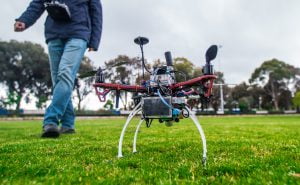Video production dos and don’ts: best practices to follow.
Video production is one of the most popular forms of content creation today. It involves the process of creating a video from start to finish, including everything from pre-production planning to post-production editing. But why is video production important? Well, it has quickly become one of the most effective ways to communicate with your audience. With the rise of social media and other digital platforms, video content has become a necessary component of any successful marketing strategy.
Whether you’re creating a video for business or personal use, it’s essential to follow best practices to ensure that your video is engaging, professional, and effective. In this blog, we’ll cover the dos and don’ts of video production, from pre-production planning to post-production editing, and everything in between. So, let’s get started on creating amazing videos that your audience will love!
Define your target audience: Before even beginning the pre-production process, you need to identify who your target audience is. Knowing your viewership will help you tailor your video specifically for them and increase engagement. If your audience is millennials or Gen Z, keep in mind their short attention span and pack your content with energetic and eye-catching visuals.
Choose the right format: Once you know whom you’re making the video for, it’s time to pick the perfect format that goes with the content and suits the desired consumption. A social media ad cannot have the same technical approach as an explainer video.
Write a script: Don’t just wing it, create a script before moving on. A good script ensures that your message is conveyed clearly and effectively. It should also be conversational and avoid being too promotional or salesy.
Create a storyboard: Visualize exactly how your video should look. A storyboard helps plan and communicate your shots, sequences, and visuals. Always keep your target audience in mind, and inject appropriate humor or tone to the storyboard when possible.
Remember, pre-production is the key to creating a top-quality video that resonates with your audience. So invest the correct amount of time and energy to ensure it is executed flawlessly.
Next up, audio quality is everything. Ensure that you’re using quality microphones to record clear sound. The last thing you want is to end up with great footage, but poor audio quality.
Stable camera shots are also a must, and avoiding shaky footage is critical. Invest in a tripod or stabilization equipment to keep your camera steady. Furthermore, record your video in high resolution. Shooting in at least 1080p will ensure that your video looks crisp and professional.
By keeping these production dos and don’ts top of mind, you’re well on your way to crafting a standout video.
Start by choosing the right editing software for your project. Everyone has a favourite software, but it’s essential to choose one that fits your particular project’s needs. Whether it’s Adobe Premiere or Final Cut Pro, selecting the appropriate software will save you time and effort.
As you edit, keep your pacing and flow in mind. Create a structure that feels natural for your video, making sure that the audience doesn’t disengage from it. Use various transitions to avoid choppy cuts and focus on the audio. Additionally, adding sound effects or music can emphasize the mood or emotional tone of the video and keep the audience interested.
Color correction and grading is also essential in enhancing the movie, making it visually consistent and pleasing to watch. Finally, when exporting the file, ensure that it’s in the right format supporting your video’s platform and quality.
By following these tips in post-production, you’ll be well on your way to creating a polished video.
Whether you’re creating a video for business or personal use, it’s essential to follow best practices to ensure that your video is engaging, professional, and effective. In this blog, we’ll cover the dos and don’ts of video production, from pre-production planning to post-production editing, and everything in between. So, let’s get started on creating amazing videos that your audience will love!
Pre-production dos and don’ts
Pre-production is the foundation of a successful video production journey. It sets the tone for how the rest of the process will go. So, it’s essential to get it right. The following are important pre-production ‘dos and don’ts’ that you should strictly follow.Define your target audience: Before even beginning the pre-production process, you need to identify who your target audience is. Knowing your viewership will help you tailor your video specifically for them and increase engagement. If your audience is millennials or Gen Z, keep in mind their short attention span and pack your content with energetic and eye-catching visuals.
Choose the right format: Once you know whom you’re making the video for, it’s time to pick the perfect format that goes with the content and suits the desired consumption. A social media ad cannot have the same technical approach as an explainer video.
Write a script: Don’t just wing it, create a script before moving on. A good script ensures that your message is conveyed clearly and effectively. It should also be conversational and avoid being too promotional or salesy.
Create a storyboard: Visualize exactly how your video should look. A storyboard helps plan and communicate your shots, sequences, and visuals. Always keep your target audience in mind, and inject appropriate humor or tone to the storyboard when possible.
Remember, pre-production is the key to creating a top-quality video that resonates with your audience. So invest the correct amount of time and energy to ensure it is executed flawlessly.
Production dos and don’ts
When it comes to production, there are some strict dos and don’ts that you need to follow to ensure that your video turns out as flawless as possible. First and foremost, always use proper lighting to set the scene and capture the right mood. Bad lighting can ruin even the best video, so make sure you have adequate lighting to work with.Next up, audio quality is everything. Ensure that you’re using quality microphones to record clear sound. The last thing you want is to end up with great footage, but poor audio quality.
Stable camera shots are also a must, and avoiding shaky footage is critical. Invest in a tripod or stabilization equipment to keep your camera steady. Furthermore, record your video in high resolution. Shooting in at least 1080p will ensure that your video looks crisp and professional.
By keeping these production dos and don’ts top of mind, you’re well on your way to crafting a standout video.
Post-production dos and don’ts
After shooting your video, it’s time to mold it into the final product through post-production. Here are some dos and don’ts to keep in mind while editing your video.Start by choosing the right editing software for your project. Everyone has a favourite software, but it’s essential to choose one that fits your particular project’s needs. Whether it’s Adobe Premiere or Final Cut Pro, selecting the appropriate software will save you time and effort.
As you edit, keep your pacing and flow in mind. Create a structure that feels natural for your video, making sure that the audience doesn’t disengage from it. Use various transitions to avoid choppy cuts and focus on the audio. Additionally, adding sound effects or music can emphasize the mood or emotional tone of the video and keep the audience interested.
Color correction and grading is also essential in enhancing the movie, making it visually consistent and pleasing to watch. Finally, when exporting the file, ensure that it’s in the right format supporting your video’s platform and quality.
By following these tips in post-production, you’ll be well on your way to creating a polished video.
Live streaming dos and don’ts
Live streaming can be a great way to engage with your audience in real-time. But, before you hit that live button, make sure you have covered all the bases. Firstly, test your internet connection to ensure smooth streaming. Secondly, choose the right platform that caters to your target audience. Next up, always have a backup plan in case of any technical issues. Lastly, interact with your audience by asking questions or answering their queries while you are live. Remember, live streaming can be nerve-wracking, but with these tips, you are sure to deliver a seamless experience to your viewers.Promotion and distribution dos and don’ts
Promotion and distribution are key to getting your video seen by as many people as possible. A distribution plan should be created, taking into consideration the target audience and platforms to be used. Optimize the video for SEO to rank higher in search engines. Promote the video on social media platforms, but don’t overload your audience. Lastly, monitor analytics to determine if the marketing strategies have been successful, and don’t be afraid to make changes if necessary. Just remember, promoting your video is just as important as creating it!Conclusion
Remember, when it comes to video production, it’s important to define your audience and choose the right format, lighting, audio, and stable camera shots during production. Editing is crucial, don’t forget to test your internet connection, choose the right platform, and promote on social media. Use analytics to improve your content. With these dos and don’ts in mind, there’s no reason why you can’t start creating videos and make them look and sound professional.More articles

The rise of mobile video production: tips for success.
In recent years, the world of video production has undergone a transformative shift with the rise of mobile video production. The accessibility and convenience of
March 8, 2024

Video production ethics: responsibility and impact.
In today’s digital world, video production has become easily accessible to all. It is an exciting time with endless possibilities for creativity and expression. But
March 8, 2024

Video production on a budget: maximising resources.
Video production on a budget can be quite the challenge. As content needs grow, budgets often shrink or stay the same. Marketers find themselves at
March 8, 2024